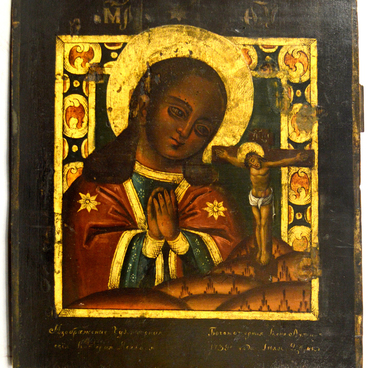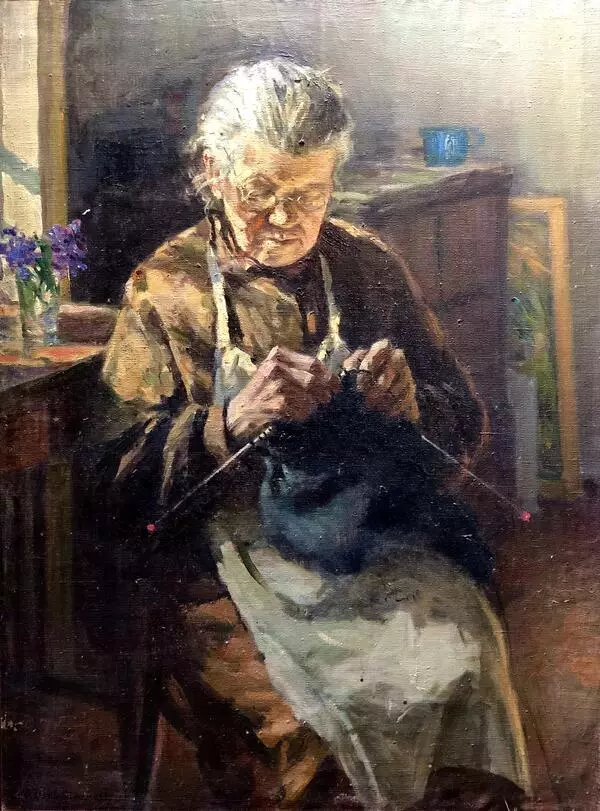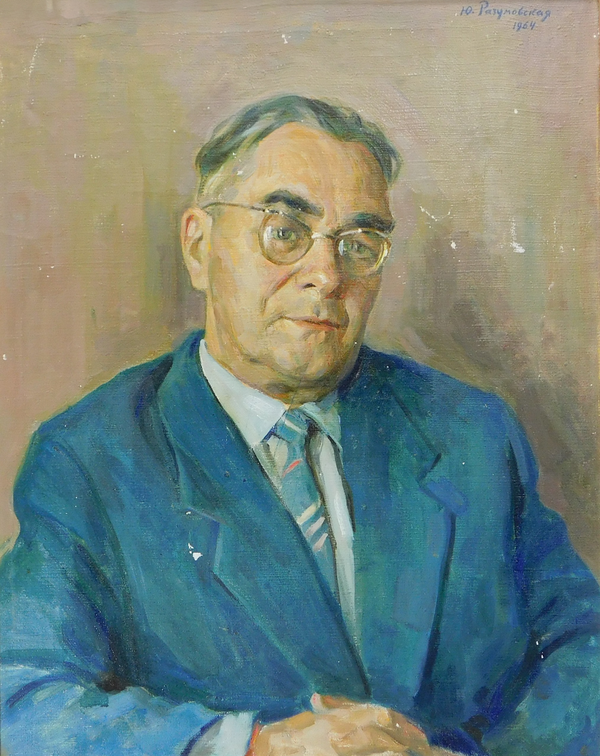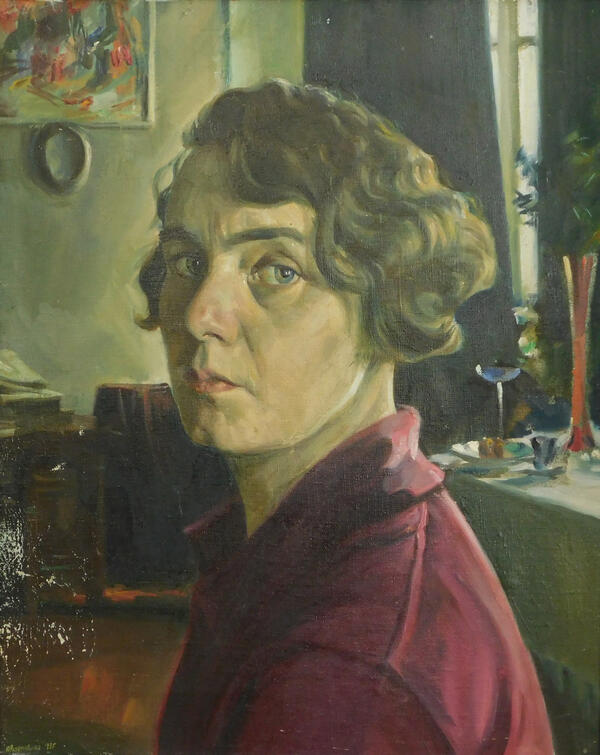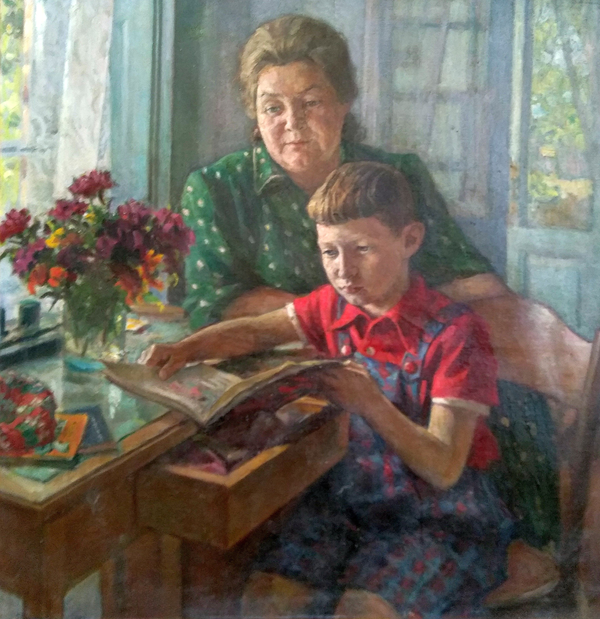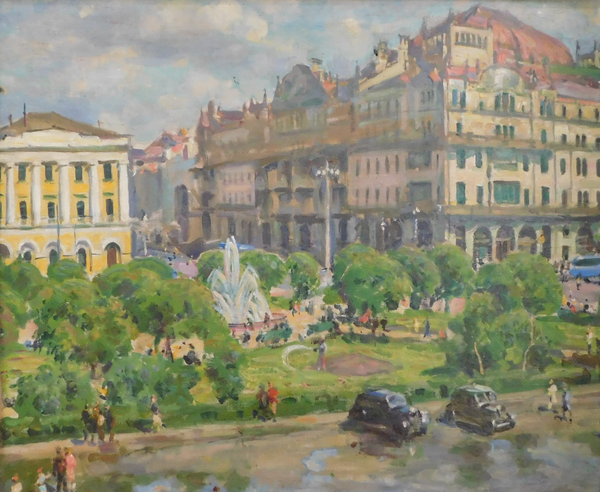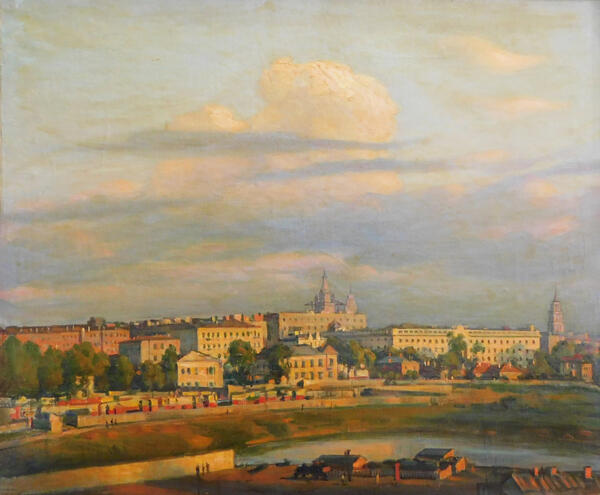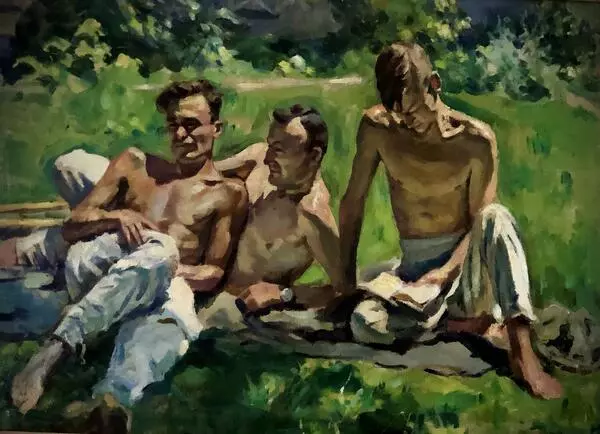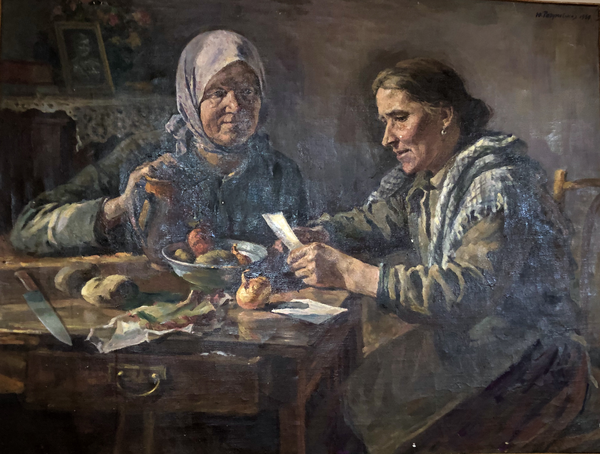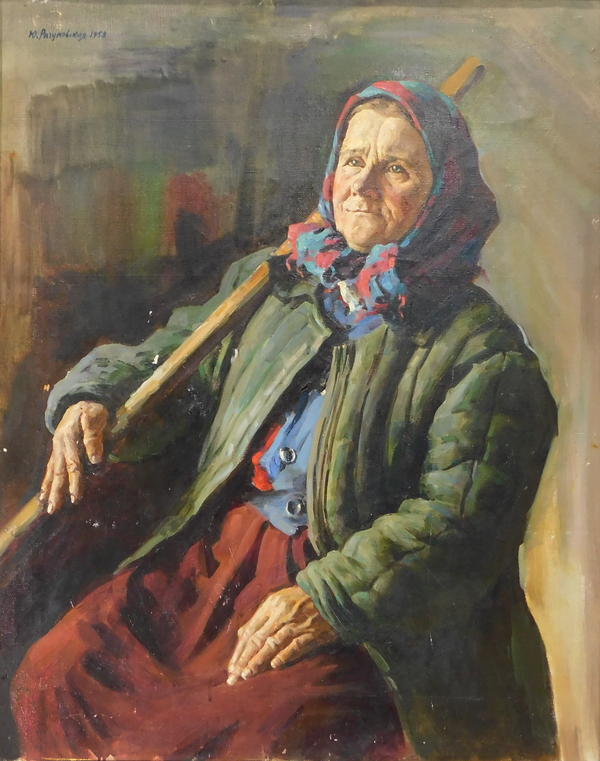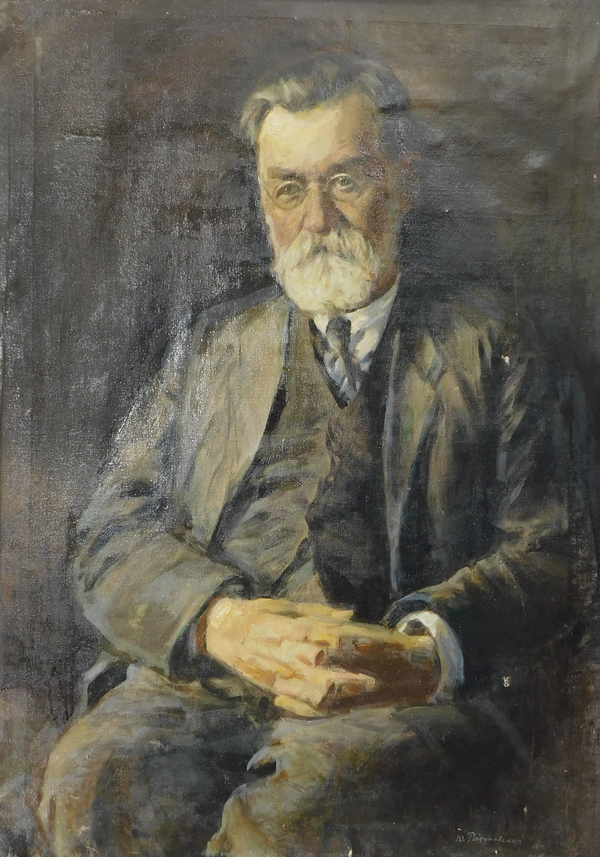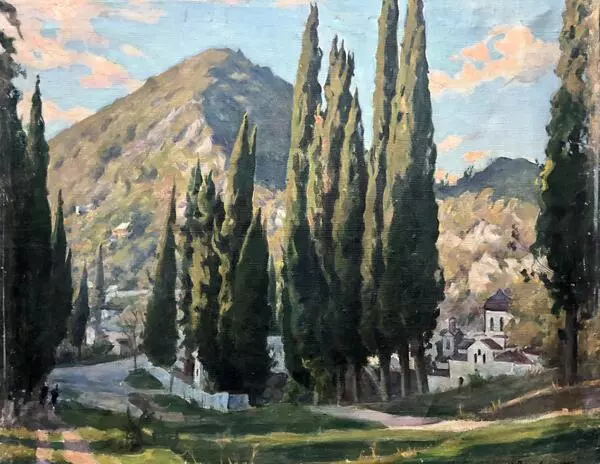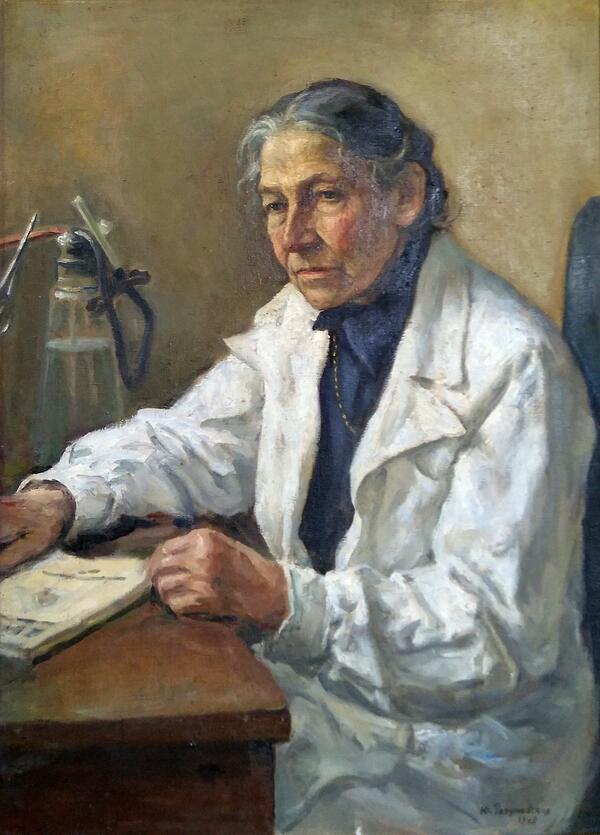One of the brightest works on Oriental theme featured in the museum collection is made by Yulia Razumovskaya. The Moscow-born painter and graphic artist and an author of many portraits, landscapes, still lifes, and genre paintings, she was born in 1896 and had an extremely interesting creative career filled with meetings with famous artists, travelling around Russia and other countries.
Yulia Razumovskaya graduated from the Academy of Arts in Saint Petersburg, she studied at Dmitry Kardovsky’s workshop. Despite the popular in the early 20th century variety of “-isms”, he worked within the frame of realistic art, so the young artist emulated his solid, firm, and quick manner of painting.
The painting Legend of Old Bukhara is completely different in its manner and palette. The special memories bonded Razumovskaya with the East. She visited Uzbekistan three times between 1925 and 1927. The artist worked there along with her husband architect Loginov during the expeditions for the renovation of art monuments. The bright colours of the markets filled with cloths and spices, exotic architecture, mostly night life were completely different from the ordinary days in Moscow and Saint Petersburg. Since then the Oriental theme became one of the key motifs in Razumovskaya’s art. It touched an artist so deeply that in many paintings dedicated to Bukhara Razumovskaya moved beyond the principles of realistic art and approached the expressive generalized images close to avant-garde artists. During her trips she made a lot of sketches and studies in oil along with the full-fledged completed works.
The painting Legend of Old Bukhara was made in 1927, during the last painter’s trip to Uzbekistan. The figures of the Uzbeks drinking tea are depicted very theatrically, schematically. The painting was made in a flat manner where the geometrical shape of objects and their filling with the colour defines the mood of a mysterious night city. To intensify the exotic atmosphere, the artist put the Oriental symbols into her work, such as chaikhana’s signboard, moon’s sickle, national dishes and eastern patterns on the cloth. It is possible that the lightness of painting of such unusual work was connected with Razumovskaya’s participation in Zhar-Tsvet association tending to decorativeness of depiction.
According to the artist’s sister, art historian Sofia Razumovskaya, the Kurgan collection got one of the most interesting and original works, as it gives a sense of the Soviet Central Asia’s fabulousness, moreover, in a rare for the author avant-garde manner. According to her sister, this work of Julia Razumovskaya was highly appreciated by Igor Grabar, the head of the Moscow Buying Committee in the 1930s, and he insisted on buying it for the Museum fund. Most of the works from the Bukhara series is now in the collection of the Tretyakov Gallery. The Legend of Old Bukhara became one of the first entries into the funds of the Kurgan Regional Art Museum.
Yulia Razumovskaya graduated from the Academy of Arts in Saint Petersburg, she studied at Dmitry Kardovsky’s workshop. Despite the popular in the early 20th century variety of “-isms”, he worked within the frame of realistic art, so the young artist emulated his solid, firm, and quick manner of painting.
The painting Legend of Old Bukhara is completely different in its manner and palette. The special memories bonded Razumovskaya with the East. She visited Uzbekistan three times between 1925 and 1927. The artist worked there along with her husband architect Loginov during the expeditions for the renovation of art monuments. The bright colours of the markets filled with cloths and spices, exotic architecture, mostly night life were completely different from the ordinary days in Moscow and Saint Petersburg. Since then the Oriental theme became one of the key motifs in Razumovskaya’s art. It touched an artist so deeply that in many paintings dedicated to Bukhara Razumovskaya moved beyond the principles of realistic art and approached the expressive generalized images close to avant-garde artists. During her trips she made a lot of sketches and studies in oil along with the full-fledged completed works.
The painting Legend of Old Bukhara was made in 1927, during the last painter’s trip to Uzbekistan. The figures of the Uzbeks drinking tea are depicted very theatrically, schematically. The painting was made in a flat manner where the geometrical shape of objects and their filling with the colour defines the mood of a mysterious night city. To intensify the exotic atmosphere, the artist put the Oriental symbols into her work, such as chaikhana’s signboard, moon’s sickle, national dishes and eastern patterns on the cloth. It is possible that the lightness of painting of such unusual work was connected with Razumovskaya’s participation in Zhar-Tsvet association tending to decorativeness of depiction.
According to the artist’s sister, art historian Sofia Razumovskaya, the Kurgan collection got one of the most interesting and original works, as it gives a sense of the Soviet Central Asia’s fabulousness, moreover, in a rare for the author avant-garde manner. According to her sister, this work of Julia Razumovskaya was highly appreciated by Igor Grabar, the head of the Moscow Buying Committee in the 1930s, and he insisted on buying it for the Museum fund. Most of the works from the Bukhara series is now in the collection of the Tretyakov Gallery. The Legend of Old Bukhara became one of the first entries into the funds of the Kurgan Regional Art Museum.
